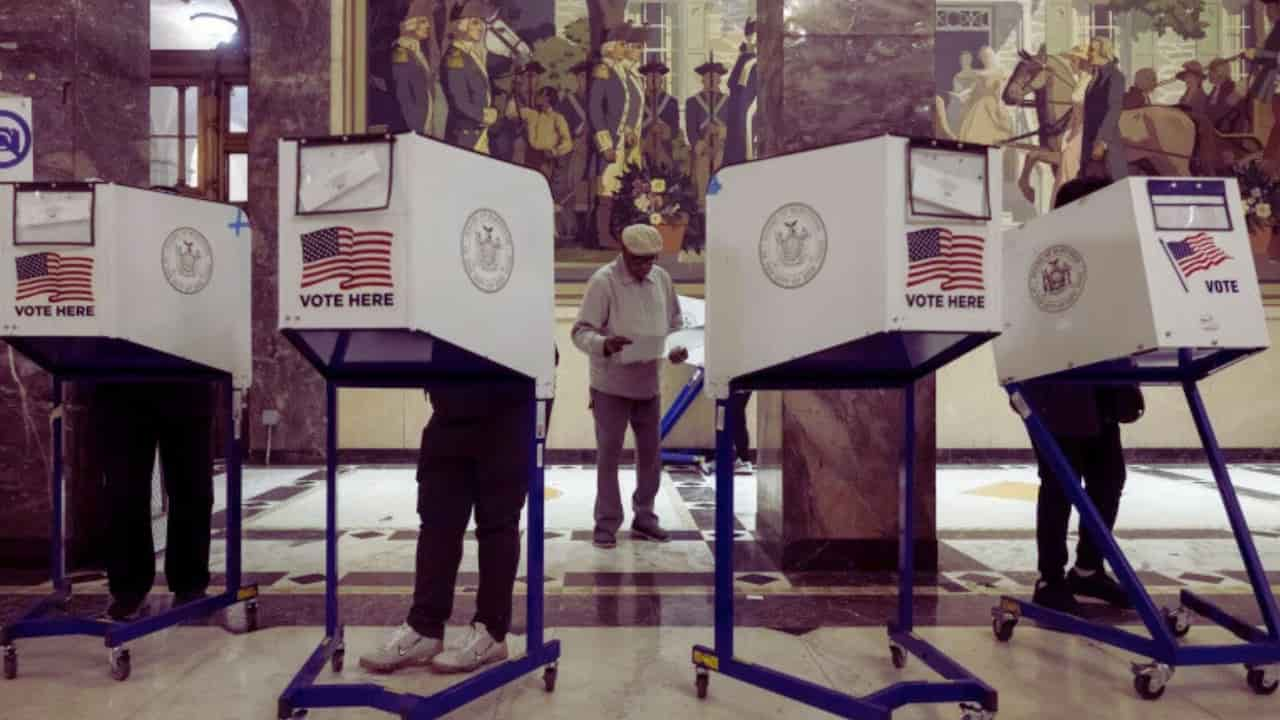Breaking Point: Trump’s Unprecedented Comeback Reshapes the American Political Landscape
In a historic turn of events that has sent shockwaves through the American political system, Donald Trump appears poised for a remarkable political resurrection that could make him only the second president in U.S. history to reclaim the White House after losing it.
As a seasoned political journalist observing the influx of returns on this crisp November evening, the narrative taking shape before us is truly remarkable. The battle between former President Trump and Vice President Kamala Harris has exposed deep fissures in America’s political foundations while simultaneously rewriting the rules of coalition politics.
The numbers tell a compelling story. Trump’s campaign has significantly penetrated the traditional Democratic strongholds, as early data from AP VoteCast reveals unexpected changes among key demographic groups.
Young voters, long considered a reliable Democratic bloc, have split their support, with Harris securing only about half of voters under 30—a notable drop from Biden’s roughly 60% share in 2020.
Perhaps most striking is the erosion of Democratic support among minority voters. The traditional Democratic advantage among Black voters has softened, with Harris securing about 80% of this crucial voting bloc, down from Biden’s approximately 90% in 2020. Similarly, Latino voter support has dipped below the previous Democratic benchmark.
The battleground map has narrowed to a familiar trilogy: Michigan, Pennsylvania, and Wisconsin. These Rust Belt giants, who have played a pivotal role in the last two presidential contests, are once again at the forefront. Trump’s early advantage in these states echoes his successful 2016 strategy rather than his 2020 defeat.
What’s driving these shifts? The economy tops voters’ concerns, with 4 in 10 Americans citing jobs and economic issues as their primary concern. Immigration follows as a distant second, with about 20% of voters identifying it as their top priority. Democracy itself weighs heavily on voters’ minds, with half of all voters citing it as their primary motivation for casting their ballots.
Remarkably, Trump’s legal challenges—including multiple indictments and a felony conviction—haven’t dampened his support. Only about a quarter of Trump voters considered his legal troubles significant in their decision-making process, suggesting that his base remains largely unmoved by his legal predicaments.
The gender dynamics of this election have proven fascinating. Despite expectations of a historic gender gap, the split has remained relatively consistent with 2020 patterns.
About half of women backed Harris, while a similar proportion of men supported Trump. The abortion issue, following the overturning of Roe v. Wade, has emerged as a crucial factor, with roughly 25% of voters citing it as their primary voting consideration.
Questions about election integrity continue to swirl, fueled by a steady stream of misinformation. The FBI has already had to address false claims, including fabricated stories about prison voting irregularities. Despite these challenges, election officials across the country report a smooth voting process.
As we await the final tallies, one thing is clear: America stands at a crossroads. If Trump succeeds in reclaiming the presidency, he’ll join Grover Cleveland as the only president to serve non-consecutive terms—a remarkable achievement that would cap one of the most extraordinary political comebacks in American history.
This election has demonstrated that old political axioms no longer hold true. Traditional demographic strongholds have weakened, coalition politics have shifted, and the American electorate continues to evolve in unexpected ways. One thing is certain as the nation awaits the final results: the political landscape of America has fundamentally, perhaps permanently, changed.
